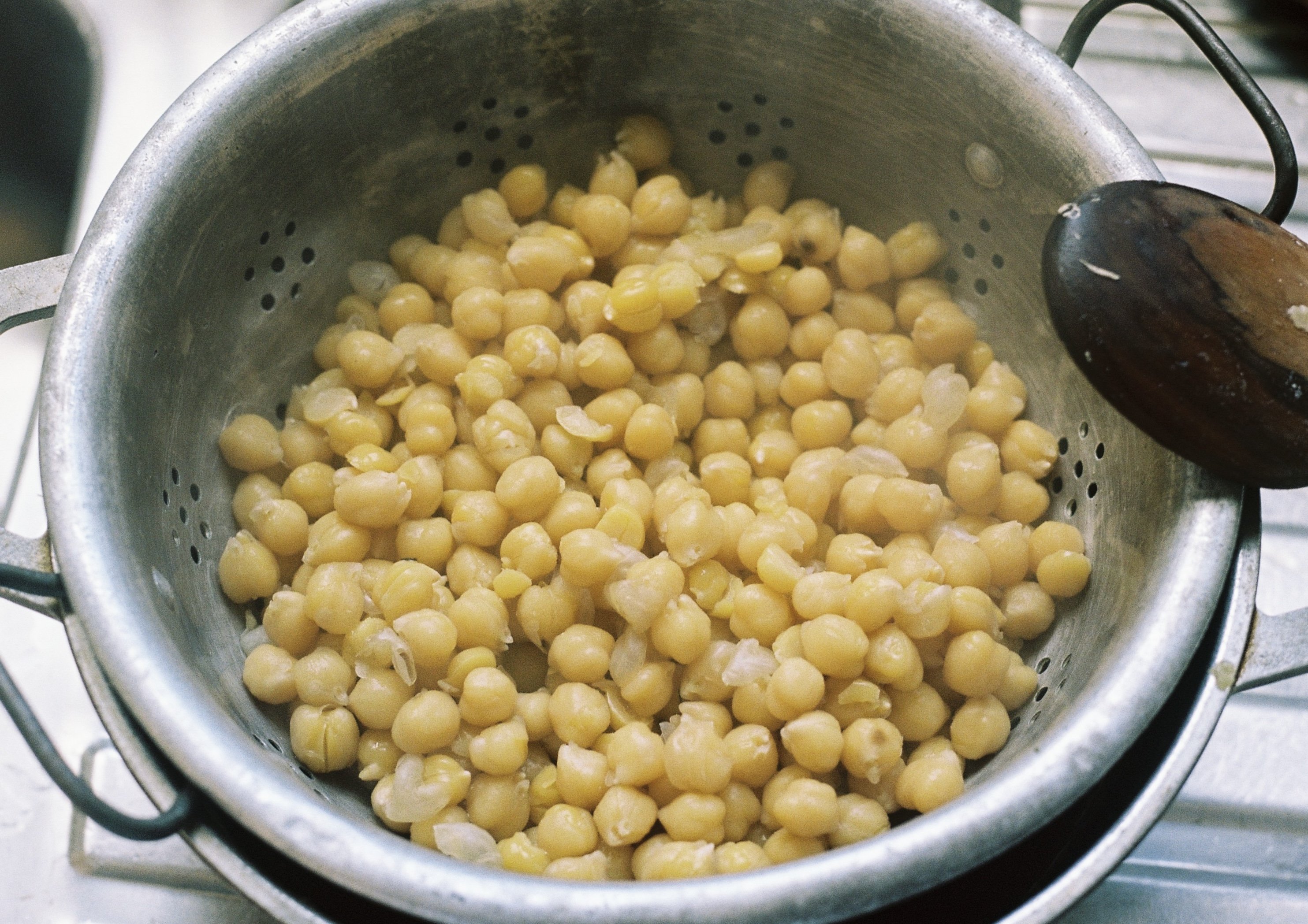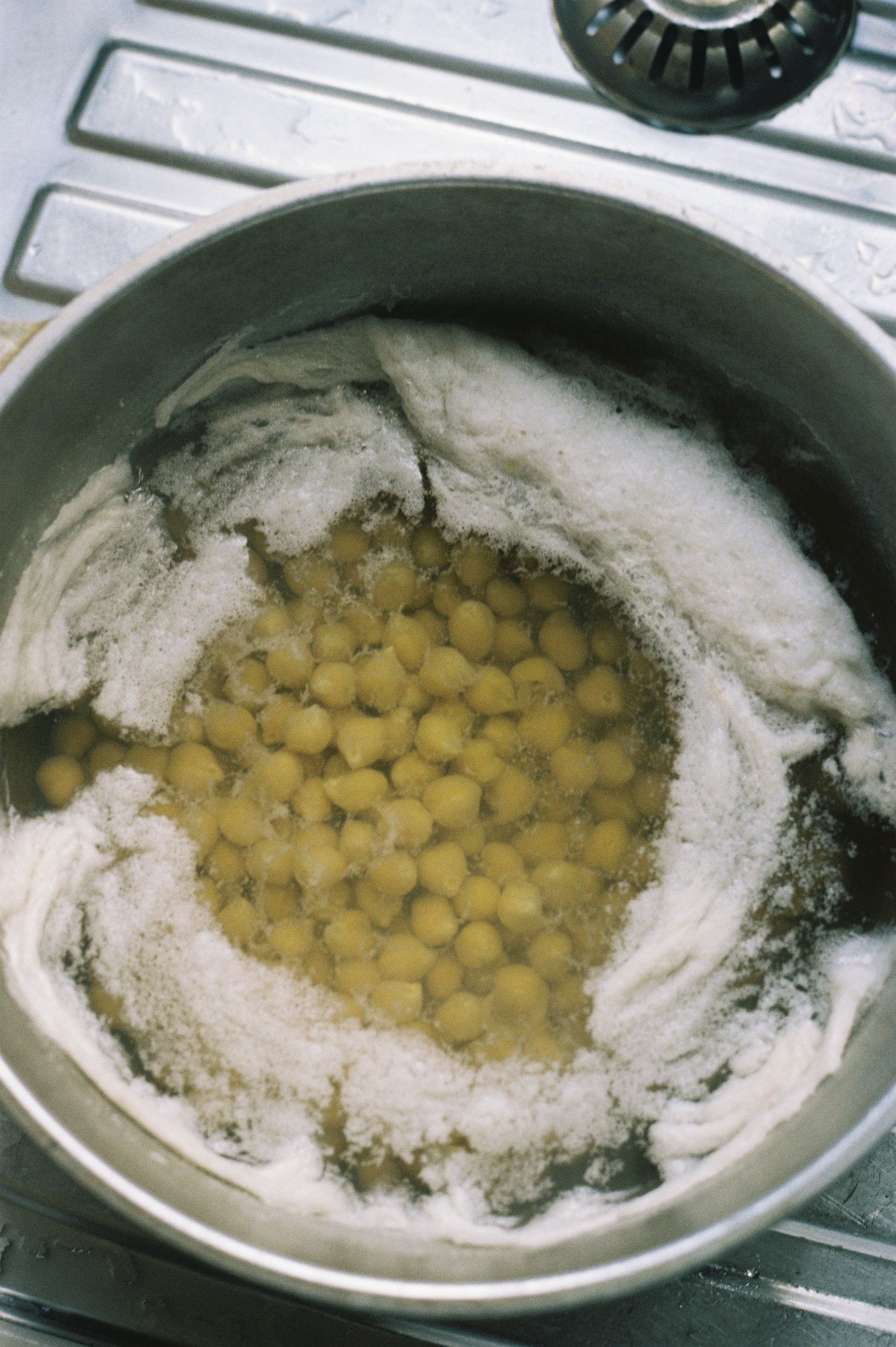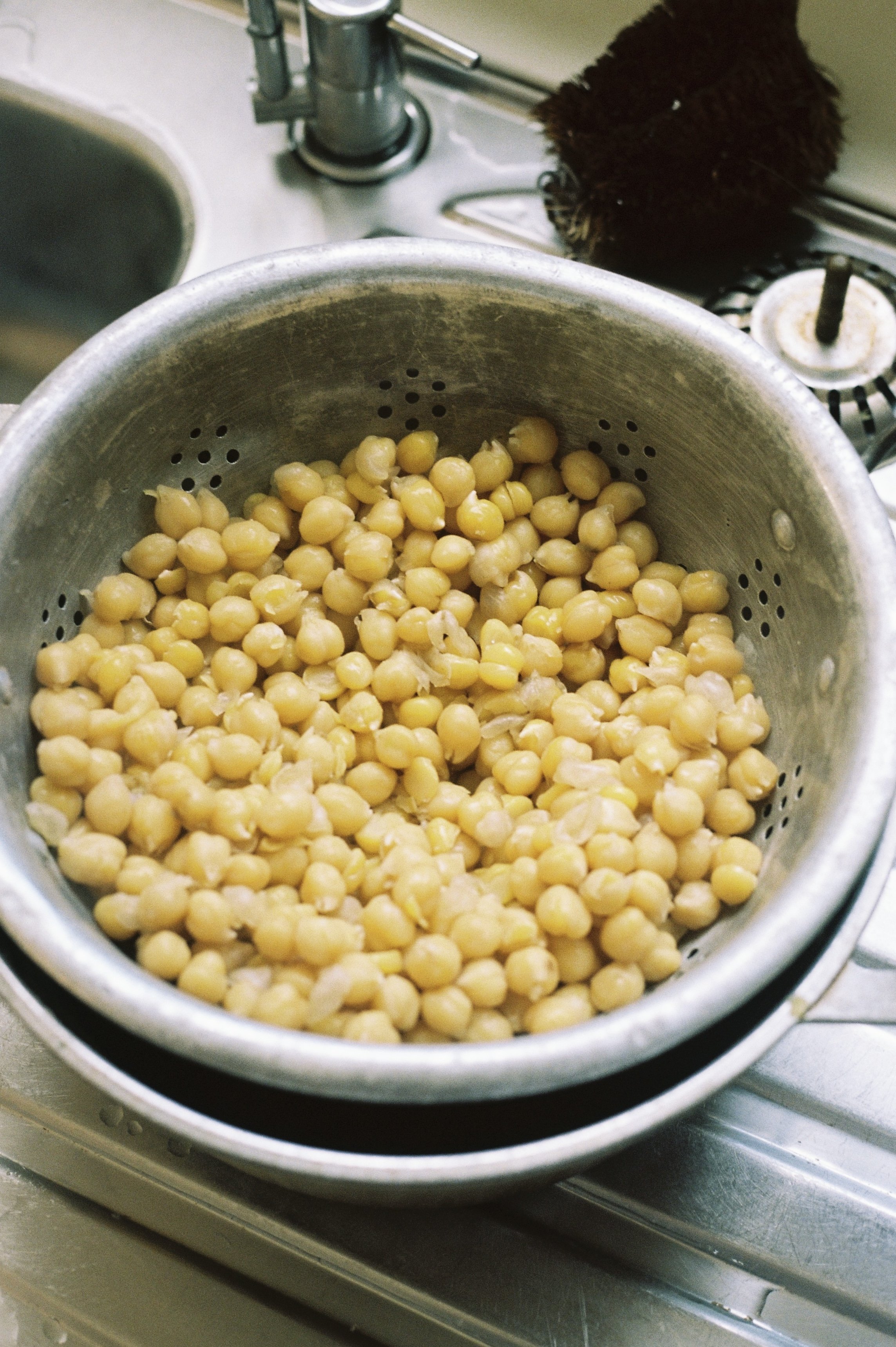Photography by Tracey Creed
Recipe by Yotam Ottolenghi
Words by Tracey Creed
Published July 26 2023
Soak your chickpeas overnight in plenty of filtered water with 1 tsp baking soda.
Drain and transfer to a large saucepan and fill with enough filtered water to cover by about 4 cm. Add the ½ teaspoon of bicarbonate of soda.
Bring to a simmer over medium-high heat, skimming the foam from the surface as required.
Turn heat down to medium-low, cover with a lid and simmer for between 30 and 50 minutes, checking your water volume after twenty minutes. You decide how cooked you want your chickpeas to be. When the skins start to come off, they should be done, though the timing will differ depending on your chickpeas.
Using a slotted spoon, gently move your chickpeas around the water, allowing the skins to be released and rise to the surface.
Discard the skins but don’t worry too much if you miss some—this is otherwise quite time-consuming. Drain and allow to cool. Now you can make hummus!
We love incorporating food preparation into our day-to-day, and chickpeas are a constant, mainly for making hummus—because I am addicted. And the new lunchtime special, chickpea ‘tuna’ on toast with extra mayo and cashew cheese. Putting thoughtfulness and intent into the foods you prepare, including the perfect pot of chickpeas, is one way of honouring your body. Homemade food being the ultimate act of self-care. Learning and knowing more about the food we eat with some basic knowledge of nutrition and the environment, and its origins can be a starting point towards a more sustainable food system, too, I think.
Hummus is a complicated food. The earliest documentation of a dip similar to contemporary hummus dates to the thirteenth century, referenced by Ari Ariel in his article The Hummus Wars. Lebanon accused the Israeli people of trying to steal hummus and make it their national dish, and so hummus became a symbol of all the tension in the Middle East. Israeli author Nir Avieli writes of this Israel-Arab conflict in his article, The Hummus Wars Revisited: Israeli-Arab Food Politics and Gastromediation, introducing the idea of hummus as gastromediation. I recommend the read. It is available through either your Google account or Facebook account through the Academia platform.
Chickpeas have a shell that must be broken down entirely to achieve super creamy hummus. Alamir Bakery makes the best hummus you can buy on-shelf, in my opinion. The owners are Lebanese. It is wonderful. And how you get this level of authenticity at home is to follow Yotam Ottolenghi's method for cooking chickpeas, which he learned from his friend Sami Tamimi's grandmother, who is Palestinian.
Water is too acidic an environment for the cellulose-based chickpea cells, but you can use baking soda to raise the pH level. Now with the water alkaline, your chickpeas become more soluble, and the skins become soft and shed. For perfectionists, you can place your strained chickpeas on a cotton tea towel to sift through and remove those skins. It is meditative but takes quite the time. I have found that baking soda in the soaking water and during cooking is foolproof and provides the perfect chickpea for purposes where you blend or mash. Your cooking time is also reduced. If you want an intact chickpea for a salad, do not use this method.
If you are intrigued and give this method a go, I would love to see it. Tag us in your hummus at @thisislagom on Instagram!


